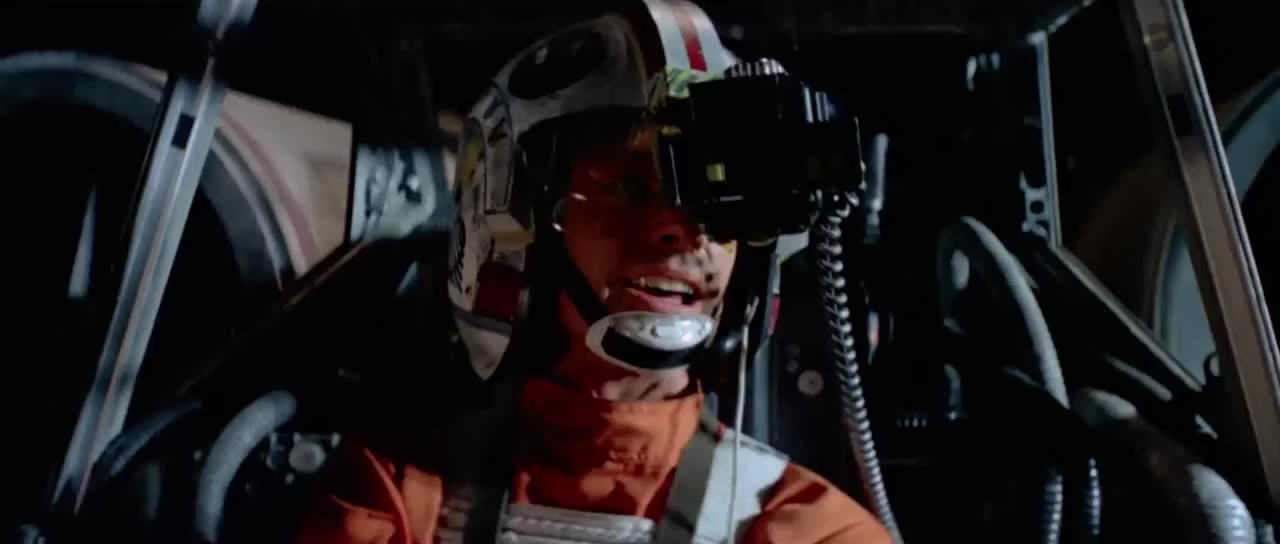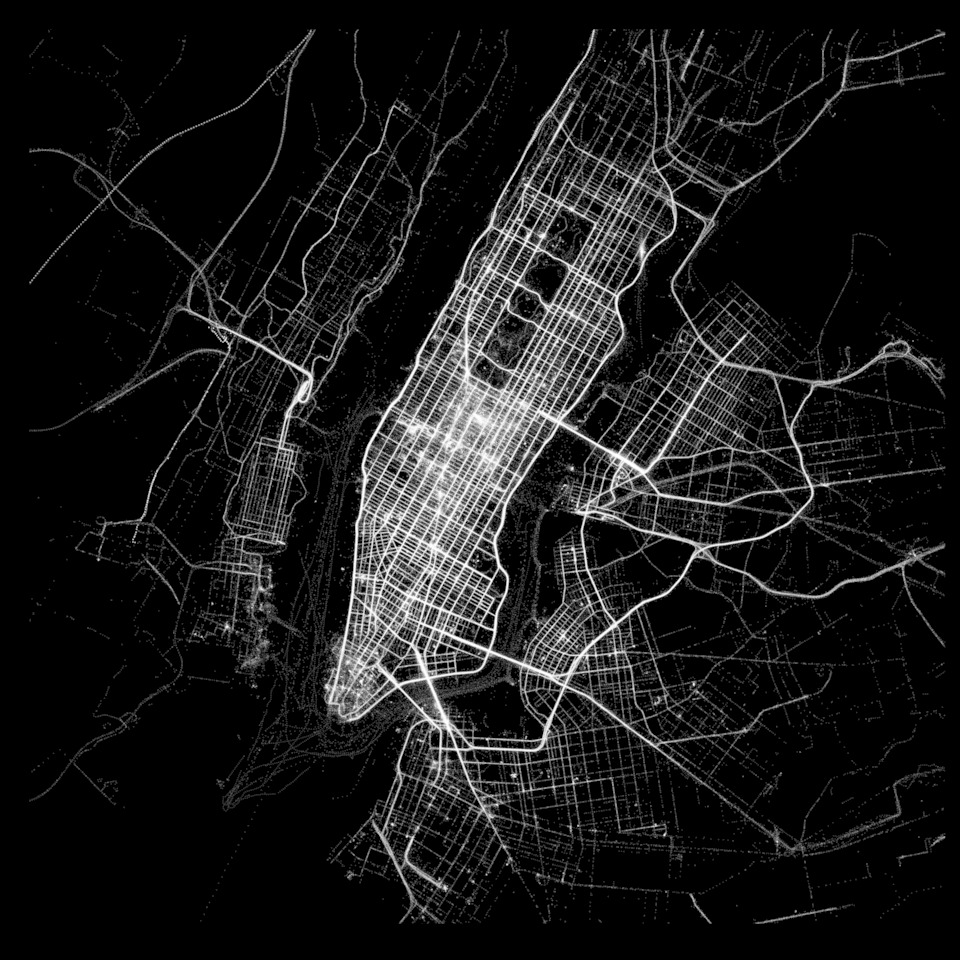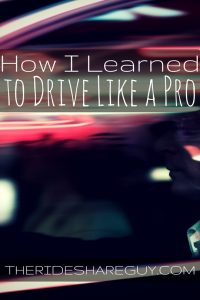Harry here. Once you become a rideshare driver, you quickly learn that driving is a skill. Navigating traffic, pedestrians and dealing with passengers only complicates things. RSG senior contributor Christian Perea knows all about these challenges and more having driven in three different cities and logged thousands of rides across Uber and Lyft. Today, he shares with us what he’s learned.
Driving is a skill. I know it’s hard to believe sometimes with autonomous cars on the horizon, but there is a reason that cab drivers have a lot of pride in the work they do (and why you should respect it). In places like London, taxi drivers need to pass “The Knowledge”, a legendary test that requires them to memorize 25,000 street names and all the businesses in the area.
It’s important to learn about the city you drive in. You will figure out what lanes will be clogged during rush hour, where parking enforcement hangs out, what speed to go between lights in order to get them to all sync green, or knowing when Google Maps is having an aneurysm.

Now I am not saying to throw out your navigation app. If you don’t know where you are driving, then the simple fact is that you are going to have to lean on it a bit before you figure things out. In reality, these apps are very good at predicting your time of arrival and measuring traffic. Even if you know the city well, GPS still offers insights into traffic conditions and road closures.
Have You Ever?
Become frustrated when you followed your GPS route into a traffic jam?
Been led by G-Maps or Waze to the back alley of an address only to creep out your passenger?
Followed your “clear traffic” route into a massive backup that didn’t show up on the app?
Then you know your GPS is not perfect. However, there are ways to get around these frustrations.
We All Started As Screen-Staring Noobs
In the beginning, many of us followed our GPS and generally tried to drive in the direction of Das Surge. Maybe you did okay, but then found that it was often difficult to locate your passengers, or that the GPS often sent you down strange alleyways to pick them up. It can be incredibly frustrating for drivers (and passengers).
But after a week or so you start to recognize a lot of the streets you commonly drive on. Maybe you even know a few of the main arteries in the city. You know a few of the clubs and maybe even some of the neighborhoods. You are starting to remember where some of the people hangout in front of clubs to catch their ride and where you should pull-over to best position yourself. You like when you get requests from places you know because you feel confident driving there. You are starting to gain a little bit of experience. But don’t get ahead of yourself; you still probably suck.
At this point, it is still okay to rely on your navigation as you are still new and you are creating the pathways in your mind of the city you drive in. Just make sure to pay attention to the road.
How To Wean Yourself Off Your GPS Screen
After a few weeks, you pretty much know the major arteries of your city. You should know most of the bigger points of interest by now even if you don’t quite trust yourself to stop staring at the phone screen. You do, however, begin to have the ability to look at a route and have a mental picture in your mind of where you will be going and what you are going to see along the way. You even have a few spots you can navigate to from any part of the city because you like to hangout or take your breaks there, like a local coffee shop with easy parking and a clean bathroom 😉
What You Should Do From Here: You may not feel comfortable taking risks on your passengers’ dime/ratings yet. What you should start doing is attempting to navigate from memory to the pickup point once you get a request. Nobody is there to judge you or see your mistake since most passengers don’t watch the app.
I have had to learn to navigate in several new cities and I have always relied on this tactic to learn their layout from memory.
When you accept a request, take a look at the streets you need to turn on in order to get to the pickup point. Try to drive to your destination without checking Google Maps or Waze. You will make mistakes along the way but each mistake helps you learn how to navigate a little bit better. Try to think of how you got places before GPS. As you pass one street, try to remember which will come next. Think about how they relate to each other via names.
After a few weeks of this, you should be able to instinctively drive to many locations. Especially if it is a request on high surge or primetime.
You will get so good at getting to the pickup point that you actually start to have fun maneuvering through the streets quickly as you laugh at all of the drivers sitting in traffic. They don’t notice you because they are still staring at their phones with their hazards on. Probably parked in a bike lane that is also a bus-stop 😉
Study The Arteries of Your City
Take some time to look at a map and see how everything is laid out. What streets intersect with which and how certain streets are meant to be main arteries while others can be used as shortcuts or a backup plan in case of a traffic jam. You want to be able to look at a point on a map and have visual memory of what it looks like.
Many Lights Are Timed For Green
City planners are not stupid. You will be surprised to find out how many streets in your city are actually timed to give you green lights as you pass through them. You can learn this over time simply by driving a lot but I found it was easier to ask the locals that I drove or from a cab driver at 3AM in front of a 7-11.
Find Shortcuts
Alleyways, parking lots, etc. Most of them don’t show up or get utilized very well with GPS. If you can shave off a minute or two by cutting through the Amtrak parking lot, you will earn more by getting to the next ride while also looking cool.
Learn Where Traffic Backs Up Everyday
A big part of earning money on the road involves driving commute hours. Every single day there are bound to be certain lanes and intersections where congestion will occur. It is very mechanical in that nature. The morning commute tends to have different congestion patterns than the evening commute. So learning where and how these backups occur will help you avoid them. Google Maps can often tell you that there is traffic at an intersection. However, it doesn’t cover what LANES that traffic is in very well. Knowing the difference allows you to skirt through traffic during rush hour.
Learn Your City’s History
I have always been a history buff. I have found that every neighborhood has a story behind it. It used to be something else like a farm or factory. Many of the areas you are driving through have a storied and interesting past. People always like to know about where they live because many have only recently moved to that area. Providing them with a tidbit on how their condos were once in an industrial area of the city paints a picture and shows you are knowledgeable.
Learning this gives you a good background on how and why things are laid out the way they are. It also makes for great talking points with passengers and shows them that you are either a local or know a lot about the city you drive in.
What’s In A Street Name?
Streets tend to have a theme to their names and layout. From big city centers to suburban housing tracts, there is usually a model for the street names. Streets can be named for trees, people from history, famous locals, or just plain old numbers. In San Francisco, streets are named for city officials (Harrison, Eddy), generals (Grant, Clay, Sutter), and prior mayors/alcaldes or states along with being numbered. There is even one named after a criminal fraudster (Green Street). Santa Barbara has most of its streets named after city planners and local Native American tribes (Chapala/Anapamu).
History of San Francisco Streets — Los Angeles Streets — Chicago — Boston — New York City — Houston — Atlanta
This not only helps you remember the streets you are navigating, but allows you to learn a little bit about the history of your city and how the streets were shaped by the people and places in the time of their making. A sort of window into the city planners’ thoughts and attitudes at the time they were laying these streets out.
You Will Earn More By Knowing Your City
If you develop the skill to traverse your city quickly and efficiently, you are able to conduct more rides. You can make decisions and judgement calls on whether or not you can realistically chase surge. It allows you to get back to the busy areas faster and while putting less miles on your car. This leads to a tighter utilization rate of the miles you drive with a fare versus without.
So go learn your city streets and enjoy the sights and scenery!
How well do you know your city streets? What did you do to learn them?
-Christian @ RSG






